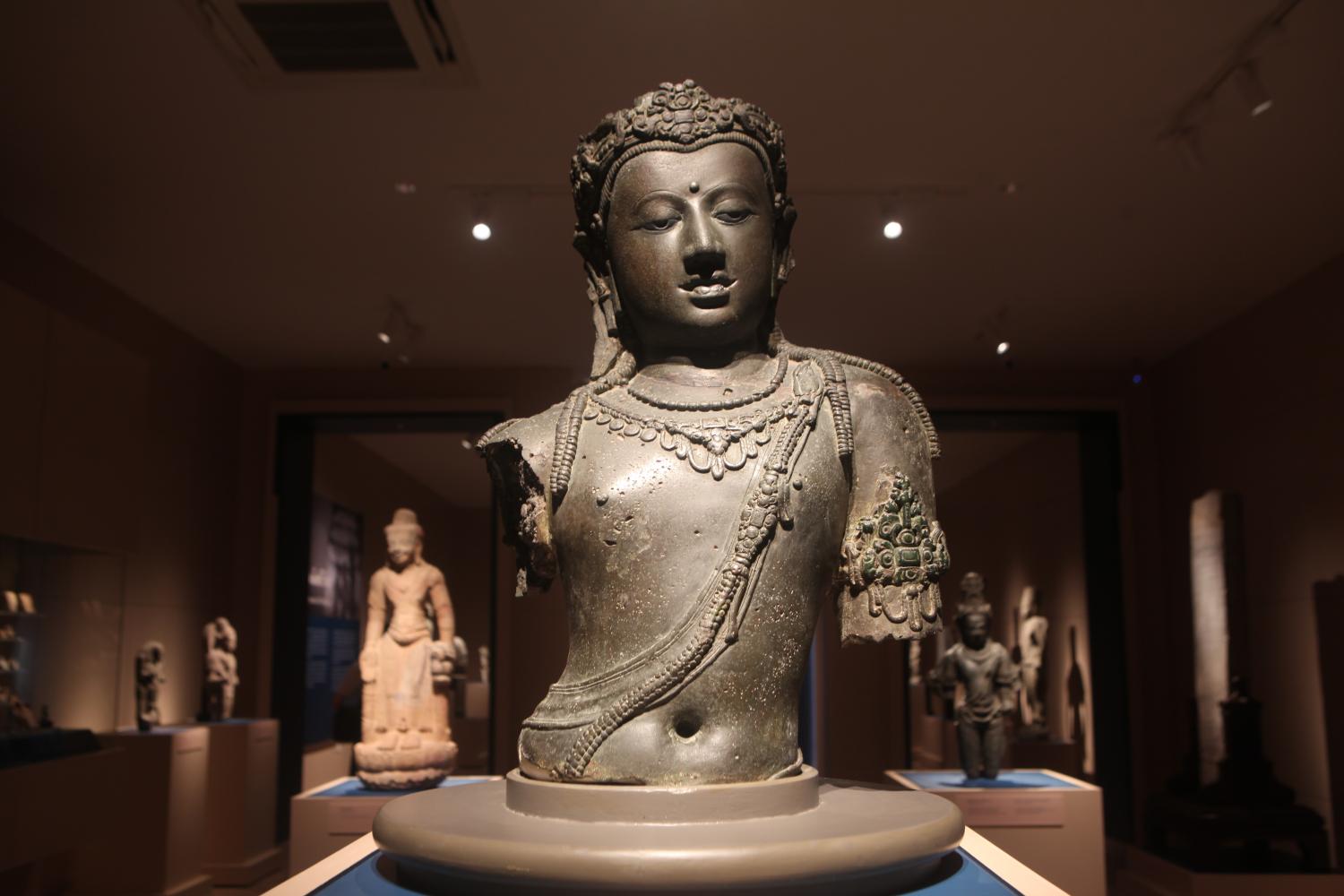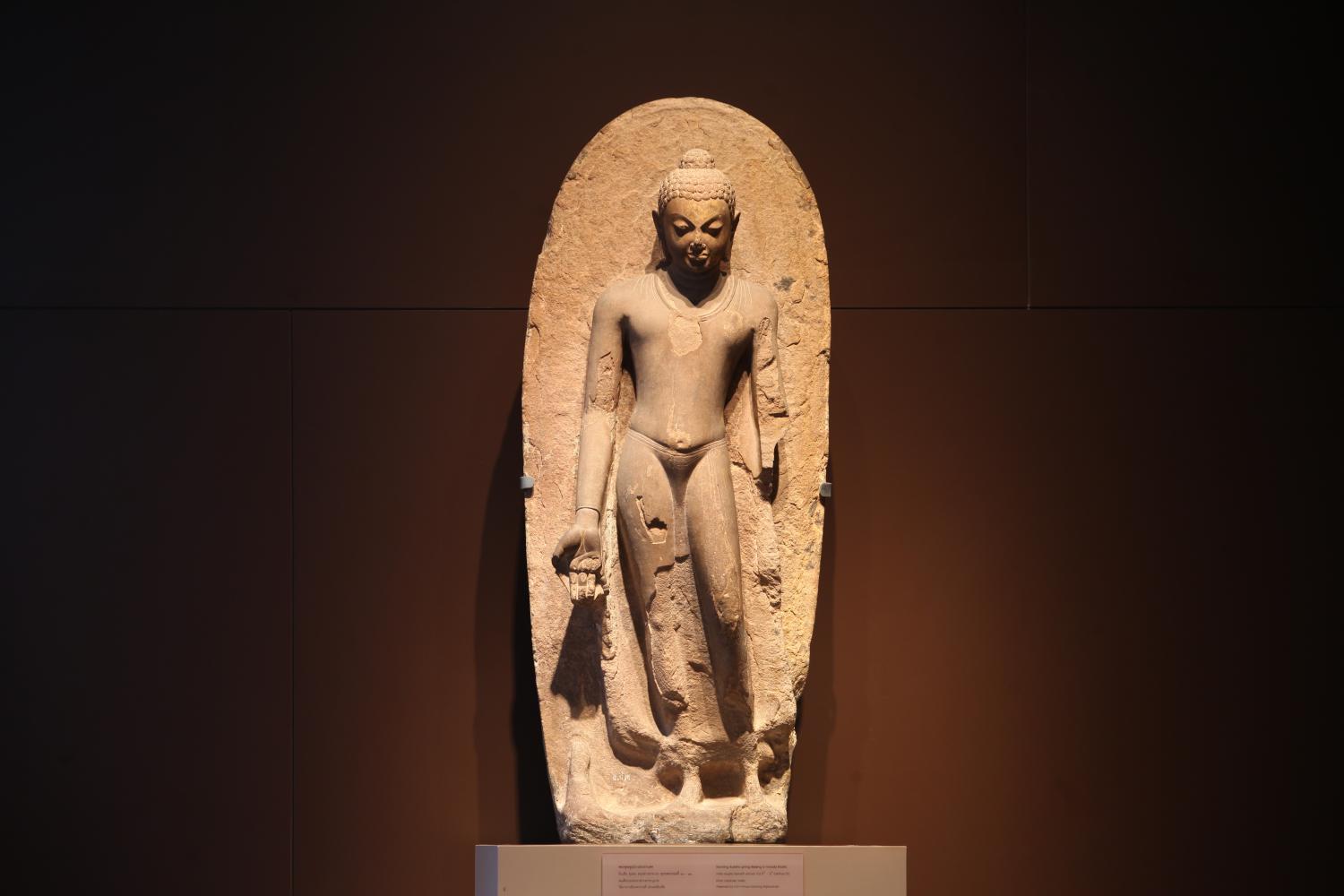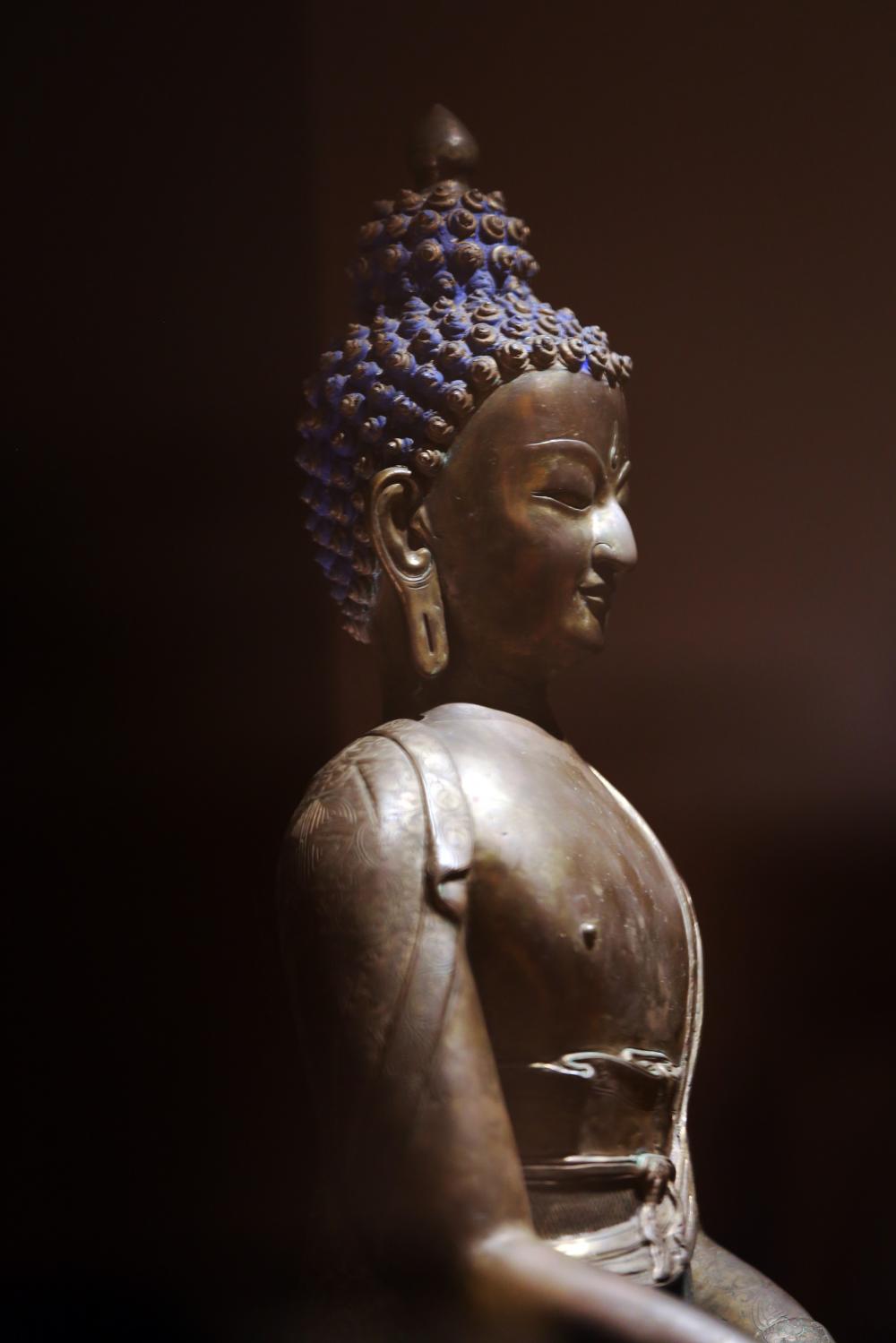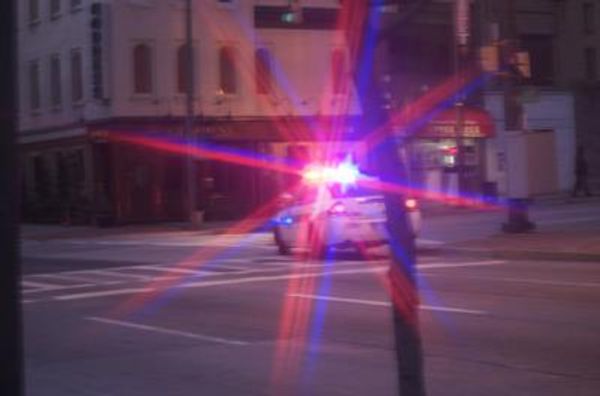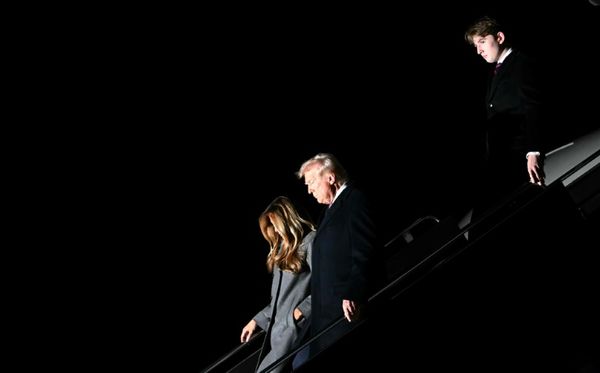
As Thailand welcomes vaccinated tourists from 68 countries, the Bangkok National Museum remains one of the city's most popular attractions with improved landscapes, layouts and lighting, allowing visitors to experience a new setting and observe diverse exhibitions in 360 degrees.
After the facelift of the Prapatphiphitthaphan building, the two-storey Mahasurasinghanat building recently reopened its doors to lure those interested in history and arts, as part of the renovation of Wang Na, aka the Front Palace, which began in 2012.
This Thai-style two-storey building is home to five rooms and the exhibition is divided into different themes so visitors can learn about Thailand's history, culture and arts through a rare collection of artefacts, jewellery and pottery from prehistory to the Srivijaya era.

"This building's renovation will be completed when the Lopburi Room opens to the public next month. This is a soft opening to set the tone for the rest of the programme. At the same time, Phra Tamnak Daeng [the Red House] and the Chao Phraya Yommarat Memorial Hall [Kaew Singhaseni] are slated to open soon to highlight Wang Na's Chinese arts, while the courtyard's scenery will be enhanced as well," said curator Suppawan Nongnut.
The building introduces a one-way system for a walking tour and the Asian Arts Room is designed to resemble a time capsule to take visitors back to the origin of Eastern civilisation. At the entrance, a wide range of ancient Buddha statues in different designs demonstrate how Greco-Roman influence spread to Persia and India when Alexander the Great occupied parts of Asia.
Connecting the West and East, the South Asia region has been a cradle of civilisation and visitors can see a series of ancient Buddha heads made between the 1st and 4th centuries in Hadda, Afghanistan, as well as a Buddha statue with a natural curl bun that looks like Apollo (the Olympian god of the Sun and healing) from Malakand, India.
A seated Buddha statue from Gandhara, Pakistan, and a standing Buddha statue in a posture of giving a blessing was crafted in Gupta Sarnath School-style during the 5th to 6th century and transported from Varanasi, India.

"The Buddha statue in a posture of benediction is a masterpiece from the Gupta Sarnath School. It wears exquisite Kashi silk and has a swollen head with a spiral bun, long ears and hands, all of which are based on the traits of the great man," Suppawan explained.
Inside, a huge map shows the Silk Road network that ran over land and sea from the 2nd to 18th centuries, with cultural exchange taking place along the ancient trade route. Archaeological evidence indicates that ancient humans lived on this continent and built the Mesopotamian civilisation in West Asia, the Indus Valley civilisation in South Asia and the Chinese civilisation in East Asia.
The room is dedicated to a collection of venerable Buddha and Bodhisattva sculptures, mostly from South Korea, Japan, Myanmar, China and India.
Based on Mahayana beliefs, Buddha and Bodhisattva sculptures from China, Tibet and Nepal were crafted in unique designs.
For example, the Chinese-style Yamantaka statue illustrates Manjushri Bodhisattva in a violent state, while the Nepali-style Shakyamuni Buddha sculpture has lapis lazuli-coloured hair to represent the dark night sky.

The sculptures of Avalokiteshvara Cintamanicakra Bodhisattva and Avalokiteshvara Bodh were created in the 17th to 19th centuries to celebrate the flourishing of the arts and culture in the Edo period while a bejewelled wooden Buddha sculpture from Mandalay showcases first-class Myanmar craftsmanship. A gold Indian Pala-style statue of Buddha performing the Eight Great Miracles, made in the 9th century and discovered in the crypt of Wat Ratchaburana in 1958, is also on display.
The prehistoric room features a diverse collection of stone, bronze, glass, ceramics, jewellery, hunting gear and agricultural equipment that demonstrates ancient invention and technology.
"Learning how to regulate fire was a significant factor in helping mankind progress. Setting fires was the key to developing a relationship. Humans devised language to communicate after gathering and eating around a campfire. After learning to manage temperature, they created equipment for cooking, hunting and agriculture," Suppawan said.
"Instead of using wood and stone, they learned to use bronze, copper and tin to make stronger tools and weapons. This idea resulted in the construction of cities and bronze became a popular jewellery material."

Arrowheads, spearheads and javelins created around 1,500 to 2,300 years ago are also lined up in a corner of iron implements uncovered at the Ban Don Ta Phet archaeological site, Sab Champa ancient city, and Ban Chieng archaeological site. Alongside is a fashion boutique that features a diverse array of timeworn jewellery from the National Museum's private collection, dating from 1,500 to 3,000 years ago.
Further inside, visitors can catch a glimpse of a burial chamber with a wood coffin from the Iron Age. People buried coffins in caves and cliffs, which can be found in Mae Hong Son, Kanchanaburi and Chiang Mai.
There's also a series of burial jars made around 1,800 to 2,000 years and discovered at Surin's Ban Non Than archaeological site. In the past, people placed burial goods into coffins like spear blades, pottery jars with geometric motifs and jewellery so that the dead could enjoy the afterlife.
A long hallway leads out of a burial chamber and is decorated with a collection of ancient bronze containers dating from 1,700 to 2,000 years ago. It features a bronze Roman lantern from Egypt, a bronze sculpture of a cock standing on a cage, and colourful bead necklaces made from carnelian stone and glass during the 7th to 11th centuries.

Then we reach the Dvaravati Room, which is home to a selection of age-old dhamma wheels, ritual tablets and other architectural components ranging from the 5th to 13th centuries. Dvaravati culture expanded to cities like U Thong, Kampaeng Saen, Dong Lakhon, Khu Bua and Nakhon Pathom in Thailand where historical sites, ruined structures and artefacts have been found.
"The dhamma wheels were created to mark significant religious events before India developed a sculpture-making tradition to pay homage to the Buddha," Suppawan said.
"Here, we have Thailand's biggest Gupta-style dhamma wheel depicting paco ferns. Initially, artisans adopted Roman arts and took inspiration from the king's chariot wheels. The dhamma wheels spin and provide dhamma light everywhere. It's not like chariot wheels, which are associated with war and bloodshed."
Also on view is an architectural component from the 8th to 9th centuries depicting a group of female musicians, as well as a carved stone stele from the 8th century depicting the twin miracles at Savatthi and hoary Buddha stone heads.

Our tour came to an end at the Srivijaya Room, which can be divided into three zones to describe how Srivijaya influence extended to Thailand's coastal southern towns. Back in the 3rd century, 10 settlements on the Gulf of Thailand's coastline were prominent trading hubs for Indian and Chinese sea merchants, resulting in cultural interchange.
According to the inscription, the Srivijaya Kingdom flourished in the Gulf of Thailand from the 8th to the 13th century and broadened its territory to Indonesia. Srivijaya art is a hybrid of Gupta, Post-Gupta and Pala-Sena styles that utilised stone and bronze as primary materials, similar to art on the Java and Sumatra islands. Besides the influence of Indian arts, Dvaravati and Khmer styles also feature in many historical sites and artefacts along this coastal region.
The highlights include a 1,200-year-old lifelike Vishnu statue with four arms, the Wat Maheyong inscription, Buddhist votive sealings, a huge four-armed Ganesha sculpture sitting on a skull-like base and a carved architectural component depicting Sujarata offering milk-rice pudding to Gautama Buddha, all of which were crafted during the 7th to 11th centuries.
The Bangkok National Museum is open from 9am to 4pm, Wednesday to Sunday. Admission is 30 baht for Thais and 200 baht for foreigners. For more information, call 02-224-1333.

